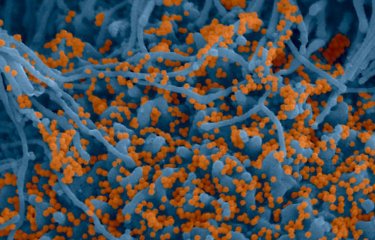-
Document de presse | 2019.01.03
Cholera outbreak in Yemen elucidated using genomics
The seventh cholera pandemic has been affecting world regions since 1961. In successive waves, Vibrio cholerae bacteria have been accompanying humans in their travels and migrations, sometimes triggering devastating outbreaks, as is currently the case in Yemen. But what migratory pathways do these bacteria generally adopt? Can we monitor, or even anticipate, cholera outbreaks at global level? In...
-
Fiche maladie | 2019.01.07
Cervical cancer and papillomavirus
Cervical cancer is the fourth most common form of cancer in women worldwide. Almost all cases can be attributed to chronic infection with viruses belonging to the papillomavirus family. Globally, approximately 600,000 new cases and more than 300,000 deaths are recorded every year. Cervical cancer can be prevented with regular screening.
-
News | 2019.01.22
Effect of the seasons on pneumococcal infections
Pneumococcal infections are still a global public health problem. Though striking, the seasonality of these infections remains a mystery for science. Researchers from the Institut Pasteur have finally unraveled the mechanisms behind the discontinuity of these infections.The pneumococcus bacterium is responsible for severe infections (pneumonia and meningitis) and frequent deaths (almost three...
-
News | 2019.01.28
A new biochemical pathway implicated in the proliferation of cancer cells
Mitochondria are organelles that provide most of the energy necessary for the cell. This energy is provided in “tokens” of adenosine triphosphate, or ATP, a molecule that is required in most chemical reactions and that is essential for all biological processes, such as locomotion, cell division, and transfer of material across membranes. Cancer cells also require energy to proliferate, and for...
-
News | 2019.01.28
How human pathogens may emerge from the environment
Legionella pneumophila is an opportunistic human pathogen that is increasingly recognized as an important cause of both community and nosocomially acquired pneumonia (Legionnaires’ disease or legionellosis) worldwide. Researchers from the Institut Pasteur tried to understand how a harmless environmental bacterium can become a feared human pathogen.This human disease represents up to 5% of...
-
Report | 2019.01.28
Yellow fever, the story of a re-emerging virus
With outbreaks in Angola in 2015 and Brazil in 2016, and cases detected in French Guiana in 2017 and even recently in Asia, where the virus had never previously been witnessed, yellow fever – a sometimes fatal mosquito-borne disease – has once again become a global public health problem. After major outbreaks between the 17th and 19th centuries, it never disappeared and has continued to be rife...
-
News | 2019.02.05
The web meets genomics: a DNA search engine for microbes
Microbes are the most common and diverse organisms on the planet. In recent years, researchers have accumulated data about them, particularly with respect to their genetic background. This avalanche of information - known as "Big Data" - is a fantastic source of new knowledge and medical progress. Researchers at the Institut Pasteur and EMBL’s European Bioinformatics Institute have combined their...
-
News | 2019.01.28
Insecticide resistance genes affect vector competence for West Nile virus
In a context of overuse of insecticides, which leads to the selection of resistant mosquitoes, it is already known that this resistance to insecticides affects interactions between mosquitoes and the pathogens they transmit. Researchers from the Institut Pasteur (Paris) and its partners prove that mechanisms of insecticide resistance, observed in Culex quinquefasciatus vector, impact the...
-
News | 2019.01.23
The shape of the heart as explained by Audrey Desgrange
The acquisition of the form of an organ is essential to its function. Discover the fascinating work about the shape of the heart, made by Audrey Desgrange, researcher at the Institut Pasteur and the Imagine Institute and laureate of an L'Oreal-UNESCO For Women in Science Award.Audrey Desgrange is a postdoctoral fellow in Sigolène Meilhac's Coordination of Cells and Morphogenesis team at the...
-
News | 2019.01.30
When the structure of Tunneling nanotubes (TNTs) challenges the very concept of cell
Cells in our bodies have the ability to speak with one another much like humans do. This communication allows organs in our bodies to work synchronously, which in turn, enables us to perform the remarkable range of tasks we meet on a daily basis. One of this mean of communication is ‘tunneling nanotubes’ or TNTs. In an article published in Nature Communications, researchers from the Institut...


